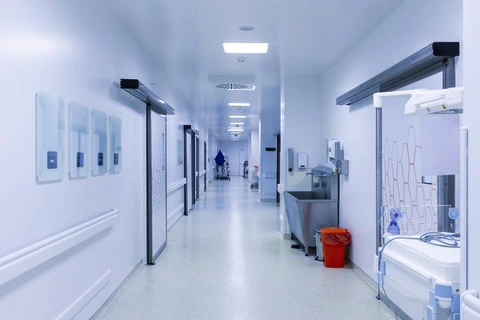Health Care Facilities

Standards in this section specify sterilization in health care facilities. Chemical, ethylene oxide and dry heat sterilization and more are included in this category.
ANSI/AAMI ST58:2013 (R2018)
Chemical sterilization and high-level disinfection in health care facilities
This recommended practice provides guidelines for the selection and use of liquid chemical sterilants (LCSs)/high-level disinfectants (HLDs) and gaseous chemical sterilizers that have been cleared for marketing by the U.S. Food and Drug Administration for use in hospitals and other health care facilities. Included within the scope of this recommended practice are functional and physical design criteria for chemical sterilization and high-level disinfection processing areas; staff qualifications, education, and other personnel considerations; criteria for selecting LCSs/HLDs and gaseous chemical sterilizers; safety and efficacy considerations in the use of LCSs/HLDs and gaseous chemical sterilizers; preparation of devices for processing by chemical sterilization or high-level disinfection; quality control methods; and quality process improvement. Definitions of terms and informative annexes are also provided.
ANSI/AAMI ST24:1999 (R2018)
Automatic, general purpose ethylene oxide sterilizers and ethylene oxide sterilant sources intended for use in health care facilities
This standard covers minimum labeling, safety, performance, and testing requirements for ethylene oxide sterilizers that are intended for general-purpose use in health care facilities and that have automatic controls. It also covers labeling, product composition, and container requirements for ethylene oxide sterilant sources, as well as labeling, performance, safety, and installation requirements for ethylene oxide emission control systems.
ANSI/AAMI ST41:2008 (R2018)
Ethylene oxide sterilization in health care facilities: Safety and effectiveness
This recommended practice covers the safe and effective use of ethylene oxide as a sterilant in health care facilities. The provisions of this document are intended to promote sterility assurance, help minimize occupational exposure to ethylene oxide, and guide health care personnel in the proper use of processing equipment.
ANSI/AAMI ST79:2017
Comprehensive guide to steam sterilization and sterility assurance in health care facilities
This recommended practice covers steam sterilization in health care facilities. The recommendations are intended to promote sterility assurance and to guide health care personnel in the proper use of processing equipment. Included within the scope of the recommended practice are functional and physical design criteria for sterilization processing areas (decontamination, preparation, sterilization, and sterile storage areas); staff qualifications, education, and other personnel considerations; processing procedures; installation, care, and maintenance of steam sterilizers; quality control; and quality process improvement.
ANSI/AAMI/ST8:2013 (R2018)
Hospital steam sterilizers
This standard covers minimum construction and performance requirements for hospital sterilizers that use saturated steam as the sterilizing agent and have a volume greater than 56.63 liters (2 cubic feet).
ANSI/AAMI ST40:2004 (R2018)
Table-top dry heat (heated air) sterilization and sterility assurance in health care facilities
This recommended practice provides guidelines for dry heat sterilization in health care facilities. It covers functional and physical design criteria for work areas; staff qualifications, education, and other personnel considerations; sterilization processing procedures; installation, care, and maintenance of table-top dry heat sterilizers; and quality control. Definitions, a bibliography, and annexes providing supplementary information are also included.
ANSI/AAMI ST50:2004 (R2018)
Dry heat (heated air) sterilizers
This standard establishes minimum labeling and performance requirements for dry heat (heated air) sterilizers intended for use in dental and medical offices, laboratories, ambulatory-care clinics, hospitals, and other health care facilities.
